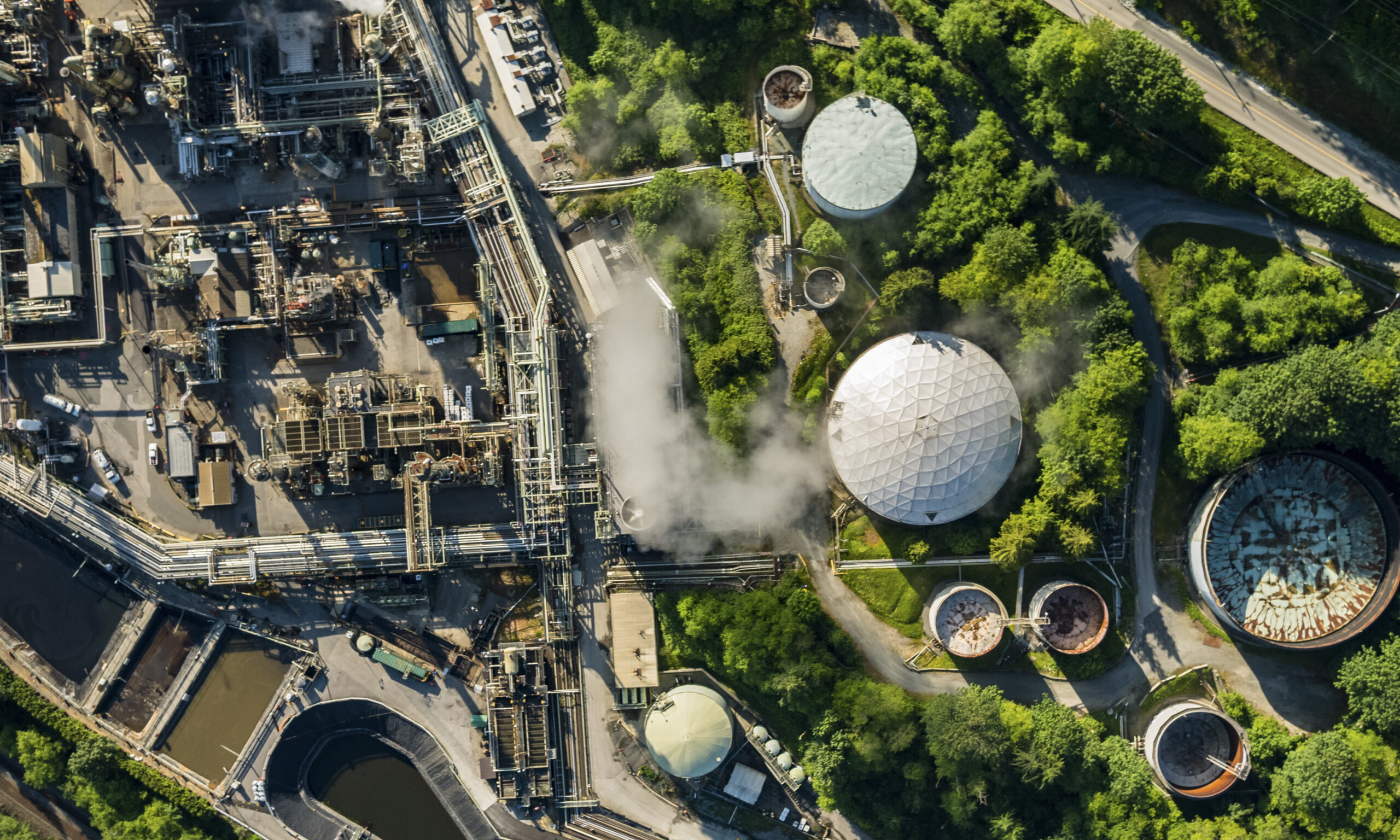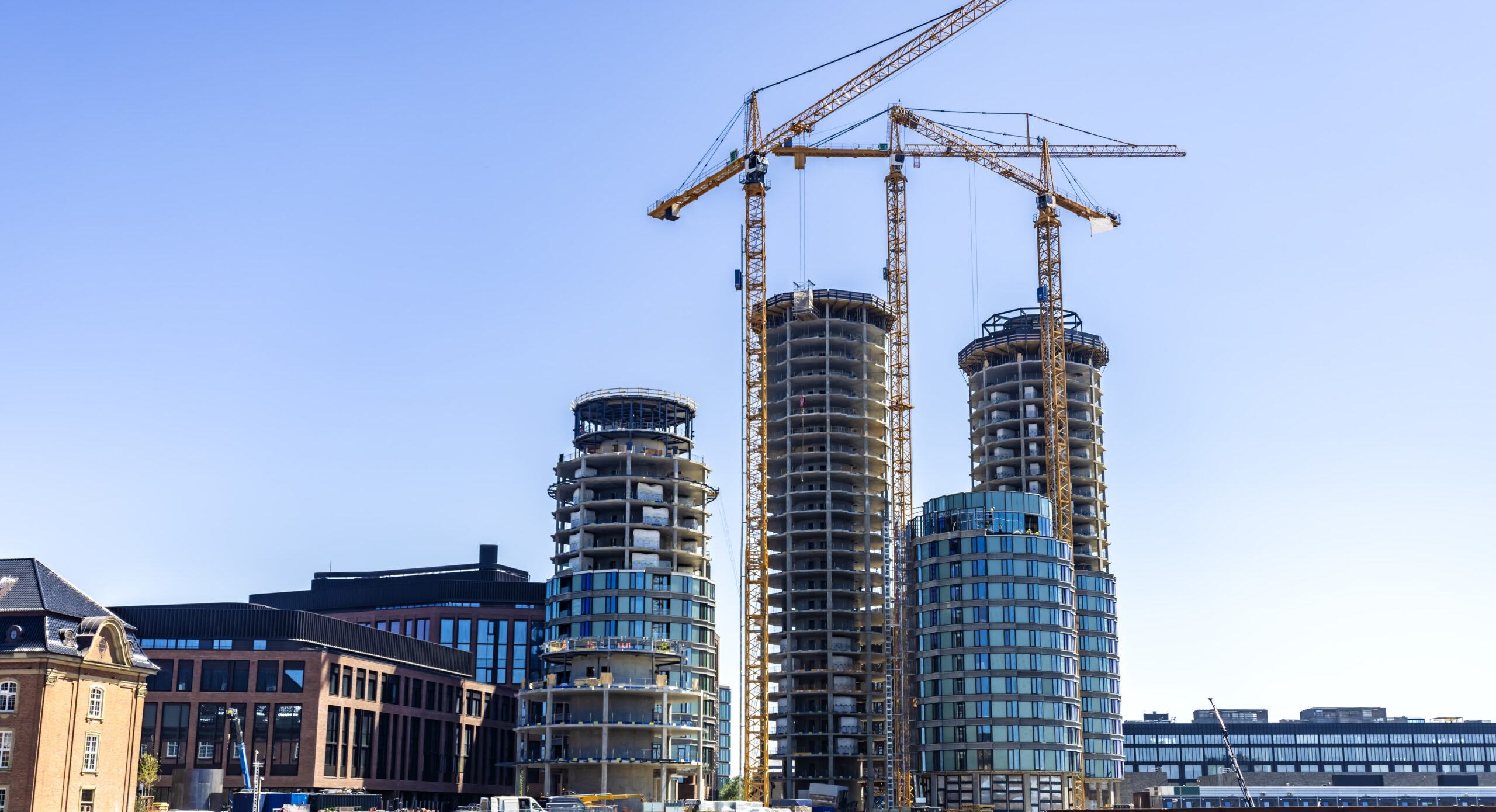The built environment is the agglomeration of man-made spaces – their structures, parts, and components. These structures provide us our work, recreation, and living spaces, and we can expect global building stock to double by 2050. On the other hand, the built environment is responsible for 40% of global emissions. As we seek to create safe and hospitable places for our growing global population, we must build and rebuild efficiently and ethically as we work to reduce their negative impact on the environment.
To help think through the issue, let’s begin by considering a single building and its emissions. As of 2023, a building generates approximately 60-70% of its lifetime emissions during the operational phase, i.e., when energy is consumed during a its use. These are known as operational carbon emissions. The rest of the emissions are embodied carbon emissions, which are the emissions generated in the production and transportation of materials, construction, maintenance, and disposal of a building. That is to say, the emissions generated to make and transport all the building materials, to erect the structure, to repair and maintain, and dispose what is left.
For the most part, embodied carbon has been the neglected sibling of operational carbon, which, for good reason, has received the lion’s share of everyone’s attention. We have focused on appliance energy efficiency measures, building design optimisation to reduce heating and cooling needs, and increasingly greening energy sources to reduce operational emissions. The good news is that these measures mean that by 2050, the proportion of operational emissions will reduce, and the proportion of embodied emissions will increase so that they are both approximately 50% of a building’s lifetime emissions. In fact, embodied emissions are expected to be responsible for majority of the carbon emissions associated with new building and infrastructure, globally, between now and 2030.
While we can optimize and reduce a building’s operational emissions once it has been constructed, we cannot do the same with embodied emissions. Those emissions are locked in once a building is made, primarily generated and emitted during the upstream process. With all the construction ahead of us, it is crucial we address and reduce our embodied emissions today.
Here we’ve put together the key interventions that we believe are required to address embodied carbon emissions to enable ecosystem-wide collaborative action.
Getting the market to care about and choosing green products
The first and most crucial ingredient is collaboration. Without producers and consumers of building materials agreeing on a common goal, we find ourselves in an endless loop, with each side holding the other accountable for a lack of supply or a lack of demand for those green materials.
But, if we can bring the upstream and downstream actors across different material value chains together, we can begin to address the ecosystem in its entirety. There are interventions in three main categories that are needed to shift the needle and drive sustainable impact – demand-side, supply-side and ecosystem-wide enablers.
On the demand side, there is an overall need to increase awareness of embodied emissions. Real estate investors and developers must understand how embodied carbon falls into their scope 3 emissions, and the need to account for and reduce this to make meaningful progress towards their net zero ambition. Demand signals from investors, real estate developers, and occupiers are necessary to reassure suppliers that a market for sustainable materials can exist.
Additionally, consumers should be supported in overcoming misconceptions about the performance and availability of low carbon materials. For example, in many cases blended cements such as Portland Slag Cement (PSC) or Portland Pozzolana Cement (PPC) have higher durability, are widely available, and can often even be procured more cost-effectively than Ordinary Portland Cement (OPC), which is commonly used in cement.
And – governments must act too. They can start by updating sustainable public procurement policies and prioritising tender submissions that report on whole lifecycle emissions and demonstrate emissions savings. Procurement mandates that scale in ambition over time, i.e., requiring a higher percentage of near or net zero materials are critical in spurring the industry into action.
How can the supply side respond to this need?
Manufacturers can implement sustainability measures and switches across their entire production process. By include electrifying mining or production equipment, opting for less emission intense raw materials, substituting traditional energy sources with green hydrogen or other renewable energy sources, and electrifying fleets or switching to low carbon fuel during transportation. In addition, engaging in R&D and collaborating with start-ups and new technology entrants is crucial to accelerating innovation and ensuring products are future-proof.
Architects, developers, and engineering, procurement and construction (EPC) companies can play a role in reducing embodied carbon by prioritising building restoration before new construction, by optimising building design to decrease the need for materials, and most importantly, actively designing for and selecting lower carbon materials. Digital tools such as Building Information Modelling (BIM) and digital twins can support design optimisation, reduce materials and waste, increase efficiency, and improve coordination across the process. A good example of this is Singapore’s Built Environment Industry Transformation plan, through which the government is strongly promoting an “integrated digital delivery” system, which seeks to integrate digital technologies such as BIM and virtual design and construction (VDC) throughout the construction lifecycle.
In particular, the construction process must become much more circular. Construction and demolition (C&D) waste often ends up in landfills and in some countries, strewn roadside. Repurposing that waste is an excellent way of reducing both emissions and waste-to-landfill. Recycled concrete, glass, and steel can replace virgin material. In India, Godrej Construction has been a pioneer in implementing such circular approaches through their recycled concrete plants.
Further, by-waste from the industrial process, including from other industries, can be used as inputs in the building material production. Slag, fly-ash, and even red mud (an aluminium by-waste) can be used in cement production. To be sure, widespread use of these waste outputs in cement production in India has helped it achieve a lower average cement emissions intensity than the rest of the world. Companies such as JSW Cement in India use such materials to produce high quality, lower emissions cement. Similarly, steel and aluminium have high recyclability potential and should be maximised wherever possible.
Critical enablers to support change
While we set our net zero targets, it is imperative that we monitor the progress that we measure. A good way to do so it to create platforms for the rigorous and objective measurement and baselining of embodied emissions.
This baseline data is needed to create industry benchmarks and targets, and more importantly, to set thresholds. Emissions thresholds ensure that we have unified, graded definitions of what constitute green building materials. Having this information will support green certification agencies in strengthening their standards with much clearer and concerted focus on sustainable materials. These forces combined will place a greater onus on developers to consider materials along with their energy efficiency measures when designing and construction green buildings and assure producers that there is a market for their green products.
Industry players should also collaborate in pilot projects to demonstrate the structural and commercial viability of low carbon materials to build confidence among stakeholders. These projects can serve as precedents for the commercialisation and scale-up of nascent technologies and assist technology providers in raising funds for their ventures.
Governments should consider adopting performance-based standards to remove the rigidity that comes with a limited focus on chemical composition for product standardisation. Shifting the focus to performance outcomes can allow innovators to experiment with chemical composition and more easily produce and standardise lower carbon materials, while ensuring high quality performance.
catalysing collective, positive, action
None of these actions alone can shift the ecosystem; rather, each action supports the next and must work in tandem to catalyse impact across the construction value chain and shift the market forward. We need to bring together influential and forward-leaning businesses, upstream and downstream of the construction value chain, and agree on the common goal of decarbonisation. A shift in end user mindset to dispel misconceptions through structured awareness building programmes will lead to wider acceptance and production of green building materials.
The path to decarbonising construction is within reach when we bring diverse partners together. Xynteo’s Build Ahead coalition is a step in this direction. Build Ahead seeks to enable the decarbonisation of India’s built environment by focusing on building materials and driving a collective commitment towards a net zero future for India. The opportunity is here to create a groundswell of demand for net zero construction and spark a virtuous cycle of adoption—let’s work on it together.
–
Stay up to date with our latest interviews by following us on social media (LinkedIn I Twitter), or Contact Us to find out how we can help your leaders and organisation create people and planet-positive impact.



